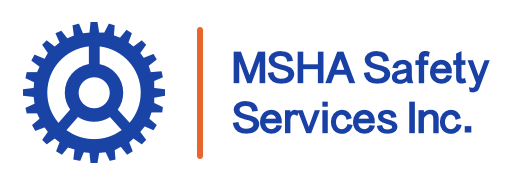Mining equipment plays a vital role in ensuring the efficiency and safety of operations in the mining industry. However, safety defects in machinery can lead to accidents, equipment failure, and significant financial losses if not addressed promptly. Ensuring timely correction of safety defects in mining equipment is essential to maintaining safe and sustainable operations. In this blog, we’ll explore best practices, regulatory guidelines, and strategies for addressing safety defects effectively while emphasizing the importance of proactive measures and training.
Best Practices for Ensuring Safe Operation of Equipment and Machinery
The foundation of safe equipment operation lies in adhering to standardized practices that prioritize safety. Regular inspections, adherence to manufacturer guidelines, and training sessions for operators are crucial. By following a standardized protocol, workers can detect potential issues early, reducing the risk of accidents or machinery failure. Additionally, organizations can implement workplace audits and safety drills to reinforce best practices and encourage a culture of safety.
Maintaining Equipment Condition: Preventative Measures and Inspections
Preventative maintenance is one of the most effective ways to ensure mining equipment remains in top condition. Routine inspections help identify wear and tear, leaks, or structural issues that may lead to safety defects. Using advanced diagnostic tools, such as ultrasonic testing or infrared imaging, can provide deeper insights into equipment conditions. A well-documented maintenance schedule ensures no checks are missed, and critical issues are addressed before escalating.
Identifying and Managing Safety Defects in Equipment
Identifying safety defects involves understanding the common signs of malfunction, such as unusual noises, vibrations, or reduced performance. Operators and maintenance staff should receive training to recognize early warning signs. Once a defect is identified, documenting the issue and categorizing it based on severity is critical for prioritizing corrective actions.
Addressing Faulty Equipment: Procedures for Handling and Repair
Handling faulty equipment requires a clear and structured approach. The equipment must be taken out of service immediately to prevent further damage or accidents. Repairs should be carried out by certified professionals following manufacturer specifications. Additionally, ensuring the availability of replacement parts and maintaining communication between teams during repair processes can minimize downtime.
The Role of Timely Safety Defect Correction
Timely correction of safety defects is essential to preventing accidents and ensuring operational continuity. Delaying repairs can exacerbate existing issues, increase the risk of equipment failure, and endanger workers. Organizations must prioritize repairs based on risk assessments, allocating resources efficiently to address critical defects immediately.
Effective Strategies for Monitoring and Maintaining Equipment Safety
To maintain equipment safety, mining operations should invest in technologies like condition-monitoring systems and Internet of Things (IoT) devices. These tools provide real-time data on equipment performance, enabling operators to detect abnormalities early. Automated alerts, combined with a centralized system for tracking maintenance activities, improve response times and accountability.
Regulatory Guidelines and Compliance in Equipment Safety
Compliance with regulatory standards is non-negotiable in the mining industry. Organizations must adhere to guidelines set by agencies such as MSHA (Mine Safety and Health Administration) or OSHA (Occupational Safety and Health Administration). These regulations outline specific requirements for equipment maintenance, safety checks, and defect correction timelines. Non-compliance can result in penalties, operational shutdowns, or reputational damage.
Training and Awareness for Equipment Safety Compliance
Employee training is a cornerstone of equipment safety. Comprehensive training programs should cover proper equipment operation, identifying defects, and understanding compliance requirements. Regular refresher courses and hands-on workshops ensure that workers stay updated with the latest safety protocols and technologies. MSHA Safety Services provides training courses that make this easy.

Best Practices for Reporting and Resolving Safety Defects
An effective reporting system is critical for resolving safety defects promptly. Organizations should establish clear procedures for reporting defects, whether through paper logs, mobile apps, or centralized software systems. Encouraging open communication and providing incentives for timely reporting can lead to faster defect resolution.
Upholding Equipment Integrity through Prompt Defect Management
Maintaining equipment integrity requires a proactive approach to defect management. Timely action, coupled with advanced technologies and a commitment to safety training, ensures mining operations remain efficient and secure. By integrating these practices into the organizational culture, companies can safeguard their workforce and optimize productivity.

